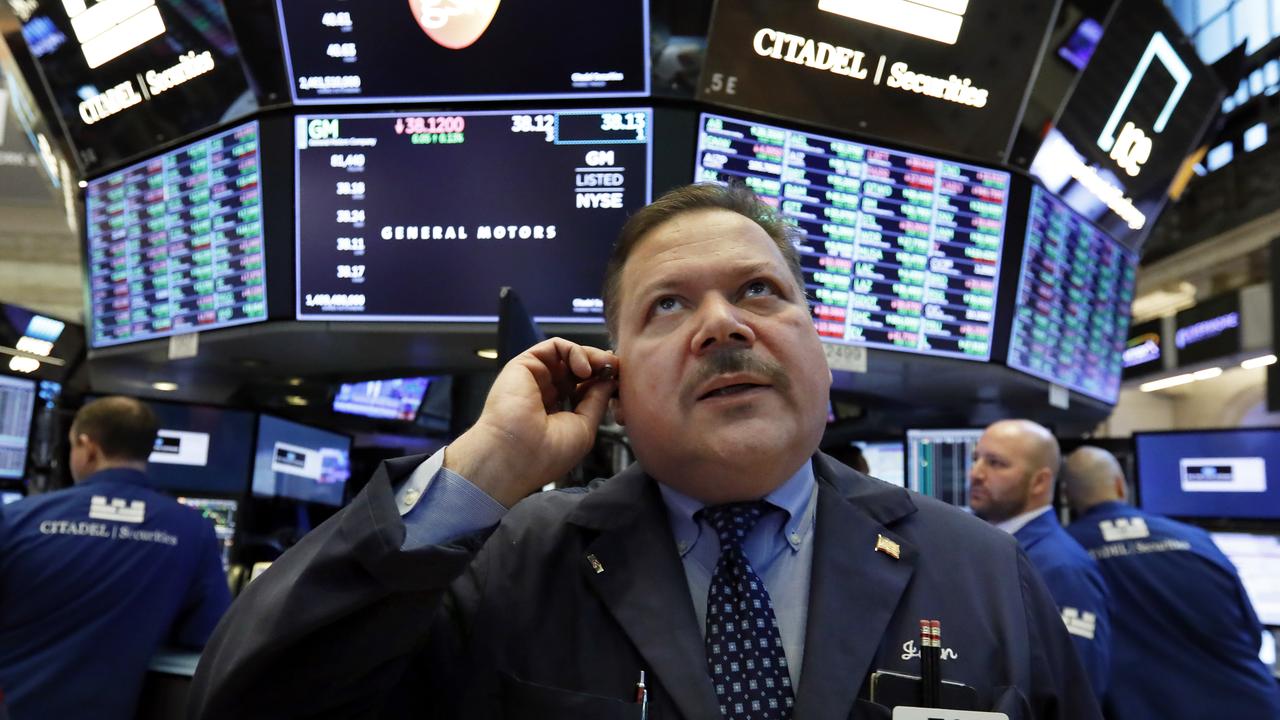Fears of weak recovery after earnings season slump
Earnings season isn’t going so well, despite already modest expectations for growth.
Results were mostly well received on Wednesday, with positive share price reactions dominating. But while banks and resources propped up the market, Wesfarmers suffered from pressure on its food and liquor margins, reinforcing perceptions of a challenging outlook for the consumer staples sector. With earnings season more than halfway through, brokers have downgraded about twice as many companies as they have upgraded since earnings season began, and Bloomberg’s consensus estimate of one-year forward earnings per share has fallen almost 4 per cent. That’s pushed the PE ratio up to 16.8 times, the highest since the pre-financial crisis peak in 2007.
Despite a slight uptick in recent days, the consensus fiscal 2017 EPS estimate for the S&P/ASX 200 index is lower than it was at the start of the month. Thus the sharemarket’s price-to-earnings ratio has stretched to 16.8 times, its highest point since 2007, and well above the decade average of 13.7 times.
According to Citi, the earnings season has been “somewhat disappointing”.
“Market earnings were expected to be weak in fiscal 2016, in large part because of the further falls in resource earnings, but they’ve been downgraded further, and leave some doubts about fiscal 2017 growth,” Citi equity strategists Tony Brennan and Mark Tomlins say.
A key feature of the earnings season is that the additional weakness has come from some of the large sectors other than resources, including insurance, telecoms, healthcare, supermarkets and, to an extent, the banks — where earnings have been under further pressure.
“Some of the misses could be considered stock-specific, for example CSL, QBE and AMP, but they also seem symptomatic of the lower growth environment, making one-off issues harder to compensate for,” Citi equity strategists say. “And it seems to be a factor driving more evident competition for market share, producing winners and losers, but undermining margins and earnings overall.”
S&P/ASX 200 EPS growth is expected to accelerate from minus 11.9 per cent in fiscal 2016 to plus 7.5 per cent in fiscal 2017. That’s mainly due to a big recovery in the resources sector, where earnings are expected to swing from minus 46.6 per cent to plus 16.9 per cent. Ex-resources, the market is expected to recover from minus 1.6 per cent to plus 5.5 per cent, but the starting point for most sectors has been revised down.
Citi equity strategists say that while resource earnings look to have bottomed, recent headwinds — like volatility in financial markets — in many large sectors mean they see risk of a weaker-than-expected recovery. “Hence even if resource earnings rebound, market growth may still only be in the mid-single digits, and may limit gains in the ASX 200 to our 5750 forecast by mid next year.”
They also note that the fall in resource earnings, and disappointing profits in other large sectors, like insurance, telecoms, healthcare and, to an extent, banks and supermarkets, have occurred alongside a loss of momentum in smaller sectors.
“The loss of earnings momentum is despite seemingly still reasonable domestic GDP growth, but other challenges for companies have included more subdued global growth, unusually low inflation and interest rates, volatile financial markets and so on,” they add.
“While market earnings growth should be better in fiscal 2017, not all sectors may see as much of a bounce back in growth as forecast, and business conditions don’t yet seem robust enough, for a suitably long duration, to stem earnings downgrades.”
Also, Citi’s commodity analysts said they maintain a bearish view on bulk commodities, particularly iron ore. While they said the current rally in iron ore prices may persist until early October, “strong headwinds” including deteriorating Chinese demand and supply increases should depress prices to an average of $US45 a tonne in 2017.
Another sharp fall in commodity prices could threaten the recovery in resources-sector earnings that’s expected to underpin the S&P/ASX 200. If interest rates continue to fall, more funds will be forced to seek returns in the sharemarket. But shares will be vulnerable to any shocks particularly if they cause a backup in global bond yields.






Earnings season isn’t going so well, despite already modest expectations for growth.